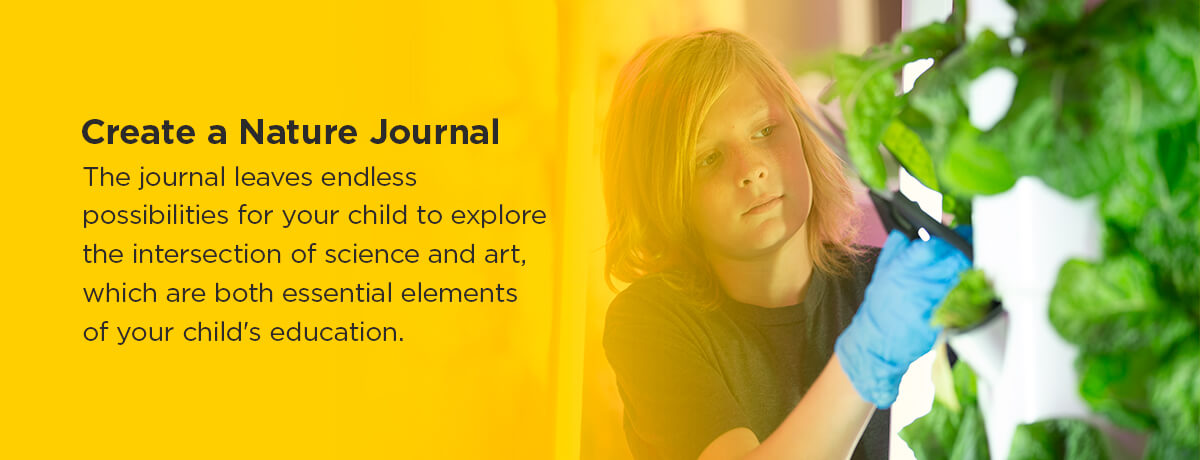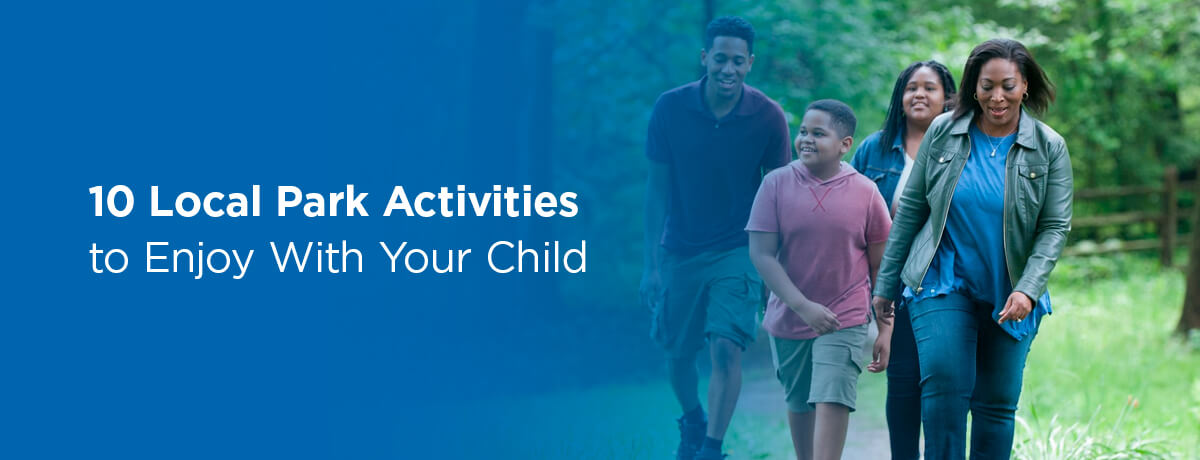Are you searching for more fun activities you can do with your child? Look no further than the local park.
When you head to a local outdoor space, your child reaps many physical and cognitive benefits, and there are endless possibilities for things to do at the park with kids. To help jumpstart your brainstorming, we’ve compiled 10 ideas for what to do at the park with your child.
The Benefits of Playing Outside
Playing outside benefits your child in many ways, including:
- Stronger muscles: Engaging in physical activities like hiking, running, or swinging helps your child build their muscle strength.
- Exposure to vitamin D: Sunlight is an excellent source of vitamin D, which contributes to a child’s healthy development by helping their bodies manage calcium and phosphate.
- Regulating sleep: Sun exposure helps our bodies make the sleep hormone melatonin and can also contribute to an improved circadian rhythm, which can help your child sleep better at night.
- Meeting other children: When you take your kids outside to play at the park, you introduce them to an environment where they can meet other children. Playing with other kids can help build social and communication skills, showing your child firsthand how to work well with others.
- Developing executive function skills: The wide range of outdoor activities allows kids to exercise essential life skills like creativity and problem-solving.
- Providing hands-on educational opportunities: The outdoors is an excellent environment for your child to apply what they’re learning in school. These hands-on opportunities can make learning more fun, leaving them more excited to return to class.
10 Fun Educational Park Activities for Kids
If you’re ready to encourage your child to get outdoors but need some ideas for where to start, try these 10 fun — and educational — ideas for park activities:
1. Search the Clouds
Bring a blanket and lie back on the grass to watch the clouds together. Engage your child’s imagination and knowledge about nature as you spot animals in each cloud.
Looking at the clouds can also be a great way to explore scientific facts about the weather. Teach your child about the many different types of clouds, each indicating something different about the weather forecast. Go over a few of the most common types and see if your child can identify them in the sky. You could even make a game out of it by racing to see who can identify the clouds the fastest!
If you use your newfound knowledge to predict the weather, write down your guesses so you can come back to them later and see if your child was right.
2. Go for a Hike
Set off down your park’s trails for a good bout of exercise. Use this time to have a nice family conversation and let your child learn about nature. Observe the trees and plants you pass by on your hike.
Many parks have such striking scenery that taking a hike can be a good alternative to extensive family travel. You can see beautiful sights without venturing too far from home!
If you pass by a stream, you could introduce a game to teach your child about how streams use gravity to flow downhill. All you’ll need is anything that can float. You and your child can place different items in the stream and see which flows downstream the fastest.
3. Look for Wildlife
The park is a great place to observe wildlife. See how many animals — birds and bugs included — your child spots while at the park. This activity even lets you teach your child about local ecosystems. Consider snapping pictures of the different animals you see. The photos will be fun mementos for you and your child, and you can use them in another of the upcoming activities on our list.
4. Gather Different Types of Leaves
Learn about the different types of leaves as you and your child explore your local park. Gather as many of each type as you can find. Then you can take your collections and sort them based on color, size, or shape. You could also use your leaves for artwork in our next activity.

5. Create a Nature Journal
As you and your child explore your local park, have your child write down their observations in a nature journal. You could also have them press your collected leaves between the pages. When you get back home, you can print off a few of your favorite pictures to feature in the journal. Your child could even trace the leaves and color in the drawings or use them as spaces to write more facts or observations.
The journal leaves endless possibilities for your child to explore the intersection of science and art, which are both essential elements of your child’s education.
6. Conduct a Scavenger Hunt
Your child has been learning all about the local plants and wildlife. You can put that knowledge to the test by setting them off on a scavenger hunt. See if they can find different types of leaves, bugs, rocks, and more. For added fun, you might even set a timer to see how fast they can find everything on the list.
7. Volunteer at Park Events
Keep an eye out for events hosted by your local park. Volunteering with your child is a great way to get involved in the community and expand your child’s horizons. Many of the events at your local park will likely revolve around environmentalism and sustainable efforts, allowing you to teach your kids about critical science-related topics.
8. Conduct Physics Experiments on the Playground
Your park’s playground equipment provides a great backdrop to teach your kids about physics. Depending on how old your child is, here are two possible experiments you could conduct:
- For younger kids: Use the slide to learn about friction. Gather various items — such as a rubber-soled shoe, cardboard box, and a stuffed animal from home — and observe how fast they go down the slide. Some items, like the shoe, might not slide at all because of friction. If you’re at the park with multiple children, put their newfound knowledge to the test by conducting a race. Have them each choose an object they think will slide the fastest, and time each one to see whose object wins!
- For older kids: Learn about Newton’s laws and chain reactions by creating a Rube Goldberg machine. One simple idea that would work great at the park is pushing a box down a slide so it knocks into a ball that then rolls into a designated goal. A fun goalpost might be a tower built of sticks so your child can watch as the stack comes tumbling down.
9. Play Memory or Word Games Around the Campfire
At this point, you’ve probably had a blast spending the day together at the park. As the sun goes down, gather around the campfire for a couple more fun and educational activities.
First up, you could play a memory or word game with your child. For example, you could start with a sentence prompt like, “I’m going to the park, and I’m bringing….” Then, go around the campfire as everyone fills in what they’d like to bring. Incorporate literacy skills by having everyone choose an item that starts with the same letter. You could also make every item rhyme. Build memory skills by challenging everyone to list all the items previously stated before adding a new item to the list.
10. Learn and Sing Campfire Songs
Finish out your day with a fun campfire song or two. Many campfire songs are silly, which will prompt lots of laughs, but music can also benefit kids educationally. Incorporate music into your day at the park to help your child take advantage of these benefits.
Contact CCA Today to Learn More
At Commonwealth Charter Academy, we know how important your child’s development is to you. Playing outside helps them grow into healthy adults and can reinforce what they’ve learned at school.
If you’re looking for a place where your child can develop academically and become a productive, happy member of their community, consider enrolling your child at CCA. We serve more than 22,000 students across Pennsylvania, offering them a personalized approach to education. Contact us today to learn more about how our online school can benefit your child. In the meantime, browse our blog for more interesting topics for parents and students alike.




